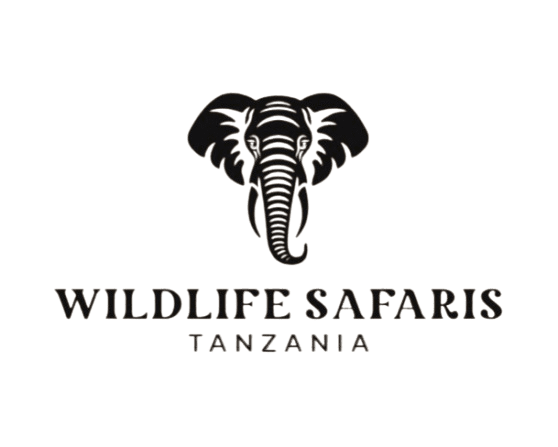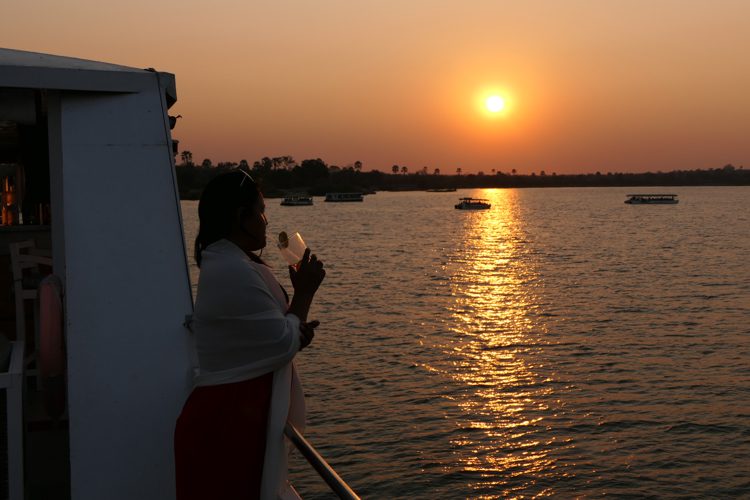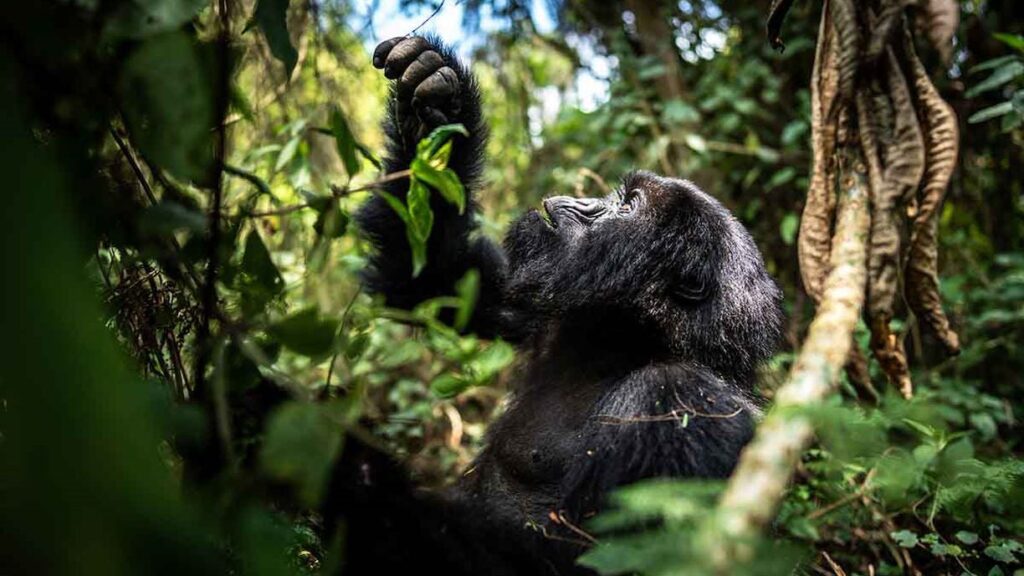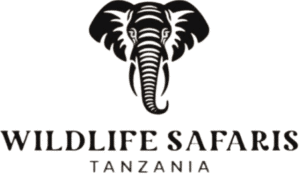Bespoke wildlife safaris tanzania
Tanzania wildlife safaris are among the most sought-after experiences in Africa, offering travelers a chance to witness breathtaking game drives across iconic destinations such as Serengeti National Park, Ngorongoro Crater, Tarangire, and Lake Manyara. From spotting the Big Five—lion, leopard, elephant, buffalo, and rhino—to witnessing the Great Wildebeest Migration, Tanzania guarantees unforgettable safari adventures. Activities range from guided walking safaris, hot air balloon safaris over the Serengeti plains, to cultural tours with the Maasai. The best time to visit Tanzania for a safari is during the dry season, between June and October, when wildlife is most visible around water sources, while the calving season in February in southern Serengeti offers excellent predator action.
Getting to Tanzania is easy, with international flights landing at Kilimanjaro International Airport (JRO) near Arusha or Julius Nyerere International Airport (DAR) in Dar es Salaam. From there, travelers can embark on luxury lodge safaris, budget camping safaris, or tailor-made private tours across Tanzania’s national parks. A safari holiday in Tanzania can also be combined with a relaxing Zanzibar beach getaway, offering the perfect blend of wildlife and coastal paradise. Whether you are planning a family safari, honeymoon safari, or photographic safari, Tanzania remains a top African safari destination that delivers diverse landscapes, abundant wildlife, and authentic cultural encounters.
3-Day Serengeti Wildebeest
4-Day Tarangire- Serengeti
4-Day Beach to Bush
5-Day Tanzania Luxury
6-Day Majestic Tanzania Safari
6-Day Lake Manyara +
10-Day Great Migration
11-Day Wildlife & Beach
What to keep in mind before booking, after booking, and while on your wildlife safaris Tanzania.
Before a Tanzania safari, plan carefully: before booking, choose the best season, parks, and safari style; after booking, confirm visas, vaccinations, and itinerary; during your safari, be prepared for early mornings, long drives, and follow park rules while enjoying wildlife with essentials like binoculars and a camera.
Why travel with us?
A reliable and trustworthy tour operator.
We are a reliable, certified, and award-winning tour operator dedicated to delivering exceptional wildlife safari experiences in Tanzania.
Contact UsExpert Local Guides
Knowledgeable, experienced, and passionate guides who bring the wilderness to life.
Unmatched Wildlife Encounters
Top destinations, ensuring the best chances to see the Big Five and Great Migration.
Tailor-Made Safaris
Personalized itineraries designed to match your interests, budget, and travel style.
Seamless Travel Experience
From booking to safari to drop-off, we handle all logistics so you can relax and enjoy.
”Beautiful self-drive through Tanzania made with a 4x4 of Self Drive Tanzania including camping gear.
We have not had any problems with the car and the contact with the landlord went very well! They helped us with everything at all times. Fine organization and I would definitely recommend.
Lotte HNov 2024
WHERE TO GO FOR SAFARI?
Wildlife safaris Tanzania destinations offer unforgettable adventures, from the Great Migration in Serengeti and the breathtaking Ngorongoro Crater to elephant-rich Tarangire, tree-climbing lions in Lake Manyara, and the remote wild beauty of Ruaha and Selous.
SELF-DRIVE SAFARIS IN TANZANIA.
Self-drive safaris in Tanzania give you the freedom to explore national parks at your own pace, offering flexibility, adventure, and an up-close connection with nature.
Need advice or you want to plan your safari? We are here to help you!
Contact Us – Wildlife Safaris Tanzania
We’d love to hear from you! Whether you’re planning your dream safari, have questions about our tours, or need travel advice, our team is here to help.
Get in Touch:
Phone: +256-701-819-223
Email: info@wildlifesafaristanzania.com
Address: Arusha Namanga road, opposite Arusha technical college
Uganda
Address: Najja Shopping Center, RM 2C
Entebbe Rd, Kampala Uganda
Rwanda
Located on Kigali Airport Road
Remera KN5 Road Giporoso Behind St Peter’s House New Building Room No.9.
Gorilla Trekking Experiences
A gorilla trekking experience is a once-in-a-lifetime adventure that takes you deep into the misty forests of Uganda and Rwanda to encounter endangered mountain gorillas in their natural habitat. It combines wildlife discovery, cultural immersion, and the thrill of standing just meters away from these gentle giants.
Gorilla Trekking Itineraries to Uganda and Rwanda
- 3 Days Gorilla Trekking in Bwindi Impenetrable National Park, Uganda
- 4 Days Gorilla Trekking Safari in Volcanoes National Park, Rwanda
- 5 Days Uganda Gorilla & Wildlife Safari (Bwindi + Queen Elizabeth National Park)
- 6 Days Rwanda Gorilla Trekking & Golden Monkey Tracking
- 7 Days Uganda Primate Safari (Gorillas, Chimpanzees & Wildlife)
- 8 Days Rwanda Gorilla Trekking & Nyungwe Forest Chimpanzee Safari
- 9 Days Uganda Gorilla Trekking & Murchison Falls Wildlife Safari
- 10 Days Combined Uganda & Rwanda Gorilla Trekking Safari
- 12 Days Uganda Rwanda Safari (Gorillas, Chimpanzees & Culture)
- 14 Days East Africa Gorilla Trekking Safari with Wildlife & Cultural Experiences
Gorilla trekking and Habituation.
Zanzibar Beach Holidays
A Zanzibar experience blends turquoise waters, white sandy beaches, and spice-scented air with a rich cultural history shaped by African, Arab, and European influences. It’s the perfect post-safari retreat where relaxation, adventure, and heritage meet on one idyllic island.
Zanzibar Itineraries
- 3 Days Zanzibar Beach Holiday – Stone Town & Spice Tour
- 4 Days Zanzibar Beach Vacation – Relaxation & Snorkeling
- 5 Days Zanzibar Honeymoon & Romantic Holidays Package
- 6 Days Zanzibar Beach & Safari Combination (Tanzania Mainland + Zanzibar)
- 7 Days Zanzibar Luxury Beach Retreat with Private Guided Experiences
- 8 Days Zanzibar Cultural & Beach Safari Guide (Stone Town, Prison Island, Jozani Forest)
- 9 Days East African Safari & Zanzibar Beach Extension
- 10 Days Zanzibar Beach Vacation with Diving & Dolphin Tours
- 12 Days Tanzania Safari & Zanzibar Honeymoon Escape
- 14 Days East African Wilderness Safaris & Zanzibar Beach Holidays Combo
Explore the heavens by the waters.
Chimpanzee Trekking Experience
A chimpanzee trekking experience takes you into lush tropical forests where you follow lively troops of chimpanzees as they swing through the canopy, interact in their social groups, and display fascinating human-like behavior. It offers a thrilling mix of wildlife observation, adventure, and learning in their natural habitats.
Chimpanzee Trekking Itineraries
- 3 Days Chimpanzee Trekking in Kibale Forest National Park, Uganda
- 4 Days Chimpanzee Trekking & Bigodi Wetland Walk in Uganda
- 5 Days Uganda Chimpanzee & Gorilla Trekking Safari (Kibale & Bwindi)
- 6 Days Chimpanzee Trekking & Wildlife Safari in Queen Elizabeth National Park
- 7 Days Uganda Primate Safari – Chimpanzees, Gorillas & Golden Monkeys
- 8 Days Chimpanzee Trekking & Nyungwe Forest Rwanda Experience
- 9 Days Uganda Chimpanzee Habituation & Murchison Falls Adventure
- 10 Days Combined Chimpanzee & Gorilla Trekking Safari in Uganda & Rwanda
- 12 Days Uganda Chimpanzee Safari with Rwenzori & Cultural Experiences
- 14 Days East African Primate Safari – Gorillas, Chimpanzees & Wildlife
Chimpanzee tracking.
Month-by-month travel guide.
When to go on a Tanzania safari?
- January
- February
- March
- April
- May
- June
- July
- August
- September
- October
- November
Wildebeest migration.
-
Peak Season: June to October
This is the dry season in Tanzania, offering the best conditions for game viewing. During these months, the wildebeest migrate across the Serengeti, making river crossings and forming massive herds, which is spectacular to witness. -
Other Considerations:
-
January to March is the calving season in the southern Serengeti, offering a unique wildlife spectacle.
-
April and May bring rains, which make travel trickier but also mean fewer tourists and lush landscapes.
-
Serengeti NP
Kilimanjaro
Zanzibar
Frequently asked questions
What is the best time of the year to visit Tanzania?
The best time to visit Tanzania depends on what you want to experience. For wildlife safaris in Serengeti, Ngorongoro, and other national parks, the dry season from June to October is ideal. During this time, animals gather around water sources, making game viewing excellent. The wet season from November to May is perfect for fewer crowds, lush green landscapes, and birdwatching. Both seasons offer unique safari experiences, so Tanzania is truly a year-round destination.
What time of the year is the Great Migration, the annual trek?
The Great Wildebeest Migration is a year-round cycle across the Serengeti. Key highlights include:
-
December to March: Calving season in the southern Serengeti and Ndutu plains.
-
April to June: Herds move north through the central Serengeti.
-
July to October: The dramatic Mara River crossings in northern Serengeti.
-
November: Herds return south to start the cycle again.
If witnessing a river crossing is your goal, July to October is the best time.
Why would you want a private Tanzania safari?
Can we arrive at any day we want?
Yes, you can arrive on any day of the year. Tanzania’s safari lodges, camps, and national parks are open year-round, and itineraries are flexible. Whether you plan around the Great Migration, the dry season, or off-peak months, safari operators can customize your trip to match your arrival date and travel style.
How exactly does a safari in Tanzania work?
A Tanzania safari typically includes daily game drives in a 4×4 vehicle with an experienced guide. You’ll explore different national parks, staying in lodges or tented camps close to the wildlife. Safaris can be lodge-based, luxury tented, or mobile camping adventures. Depending on your itinerary, you may also experience cultural visits, walking safaris, or hot air balloon rides. Meals, park entry fees, and transfers are usually included, making the experience seamless and worry-free.
Is Tanzania safe to visit?
Yes, Tanzania is one of Africa’s safest safari destinations. The country is politically stable, its national parks are well-protected, and tourism is a key priority. As with any international travel, it’s wise to follow your guide’s instructions, keep valuables secure, and take basic precautions in towns. On safari, your safety is well taken care of by professional guides and rangers.
First-time travel safari packages
A first-time travel safari in East Africa introduces you to the wonders of the savannah, the thrill of spotting the Big Five, and the cultural heartbeat of the region. It’s the perfect blend of adventure, discovery, and relaxation crafted for beginners seeking unforgettable African memories.
Climbing Mount Kilimanjaro
How to prepare for Kilimanjaro?
Preparation should focus on building endurance, strength, and mental resilience. Here’s how:
-
Physical training: Begin at least 3–4 months in advance. Focus on cardio (hiking, running, cycling), strength training (especially legs and core), and long hikes with a backpack to simulate trekking conditions.
-
Altitude readiness: If possible, practice hiking at high altitudes before the climb. If not, incorporate gradual ascent and acclimatization days into your Kilimanjaro itinerary.
-
Gear preparation: Invest in quality gear—layered clothing, waterproof boots, warm sleeping bag, and trekking poles. Break in boots well before the trip.
-
Health & mindset: Stay hydrated, eat well, and get medical clearance if needed. Mentally, prepare for long days, varying weather, and the final summit push, which is the most demanding.
How challenging is Kilimanjaro?
Mount Kilimanjaro is often described as a “trekking peak” rather than a technical climb. This means you do not need advanced mountaineering skills or equipment like ropes and harnesses to summit. However, the challenge lies in its altitude (5,895 m / 19,341 ft), steep ascents, and the physical demand of walking for several hours each day over multiple days. Altitude sickness is the biggest obstacle, so pacing, proper acclimatization, and hydration are key. With good fitness, mental determination, and the support of experienced guides, many first-time climbers successfully reach the summit.
Kilimanjaro vs Rwenzori, which one is better?
The answer depends on what kind of adventure you’re seeking:
-
Kilimanjaro: Best for those who want the iconic “roof of Africa” experience. It offers shorter treks (5–9 days), established routes, and a non-technical climb with high summit success rates. The landscapes shift dramatically, from rainforest to alpine desert to glaciers, making it a visually rewarding climb.
-
Rwenzori Mountains: Better for trekkers looking for fewer crowds, raw wilderness, and a more technical challenge. Known as the “Mountains of the Moon,” the Rwenzoris feature rugged terrain, boggy valleys, glaciers, and Africa’s third-highest peak (Mount Stanley at 5,109 m / 16,763 ft). Treks are longer (7–12 days) and more demanding, requiring endurance and resilience.
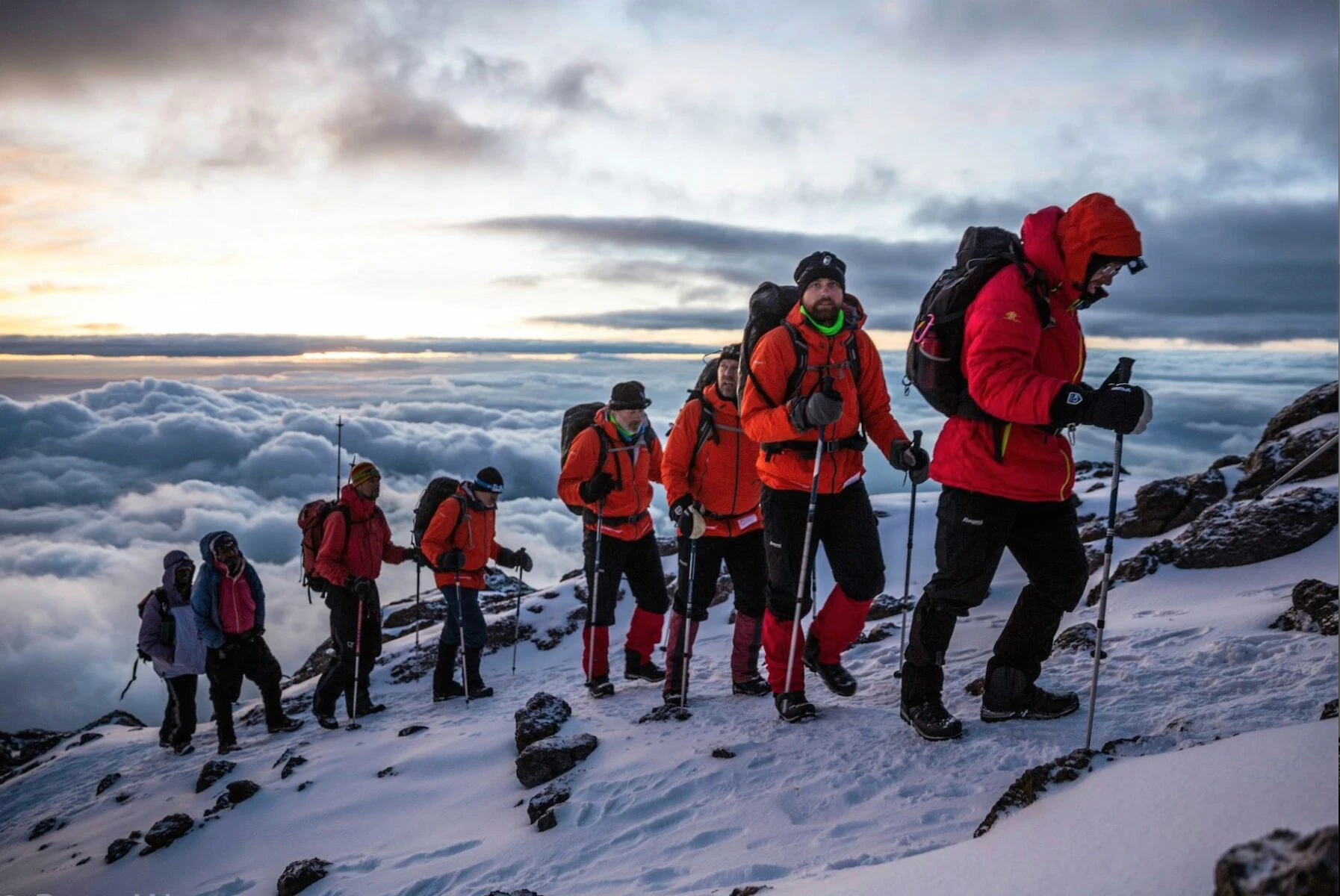
Wildlife safaris Tanzania: Accommodations
From luxury safari lodges and exclusive tented camps to budget-friendly safari campsites. Whether you’re exploring the Serengeti, Ngorongoro Crater, Tarangire, or Lake Manyara, you’ll find safari lodges with breathtaking views, eco-friendly tented camps close to the wildlife, and boutique safari resorts that combine comfort with authentic African charm. Many accommodations feature private verandas, open-air dining, swimming pools, and guided safari experiences. Choosing the right Tanzania safari accommodation ensures you enjoy both comfort and proximity to the incredible wildlife of the national parks.
Experience The Serengeti Wildebeest Migration.
The Great Wildebeest Migration is the most iconic safari experience in Africa, drawing travelers to Tanzania’s Serengeti National Park and Kenya’s Masai Mara each year. Over 1.5 million wildebeest, along with zebras and gazelles, move in a dramatic cycle in search of fresh grazing, creating breathtaking scenes of predator encounters, vast herds on the plains, and the legendary Mara River crossings. This natural wonder offers travelers the chance to witness thrilling game drives, world-class wildlife photography, and unforgettable moments on a luxury safari or private Tanzania safari tour. Whether you visit during the calving season in the southern Serengeti or the dramatic crossings in the north, the wildebeest migration is a once-in-a-lifetime highlight of an East African safari.
When to Go Wildlife Safaris Tanzania.
Tanzania’s weather patterns have become a little less predictable in recent years, but traditionally the seasons can be outlined as follows:
-
July to October (Peak Season): Warm, dry days with excellent game viewing as animals gather around waterholes. This is also when the wildebeest river crossings in the northern Serengeti take place.
-
November to December (Short Rains): Expect occasional showers, but wildlife sightings remain strong. Migratory birds arrive, resident species display breeding plumage, and safari prices drop from peak levels.
-
January to mid-March (Short Dry Season): Hot and humid, especially along the coast. Wildlife is more dispersed, but in the southern Serengeti, this is calving season for the wildebeest.
-
Mid-March to early June (Long Rains): Frequent downpours close some safari camps, yet this season offers fewer visitors, lower rates, and lush landscapes for those in the know.
For more details, explore Tanzania’s month-by-month climate trends and speak to us for the latest updates.
Wildlife safaris Tanzania in January.
January is a spectacular time for a Tanzania safari, especially in the southern Serengeti and Ndutu plains, where the wildebeest herds gather for the start of the calving season. Over 200,000 calves are born within weeks, attracting predators like lions, cheetahs, and hyenas in thrilling hunting displays. The landscapes are lush and green after the short rains, offering dramatic photography opportunities and abundant birdlife. While the coastal regions can be hot and humid, the wildlife action in the Serengeti more than makes up for it, making January a rewarding month for game drives, cultural visits, and unique safari experiences.
Pros
Activities
Cons
Destinations
Wildlife safaris Tanzania in February.
February is considered one of the very best months to visit Tanzania for a safari, thanks to the peak of the wildebeest calving season in the Serengeti’s southern plains. Thousands of newborn calves take their first steps on the open grasslands, creating incredible opportunities for photographers and wildlife enthusiasts. Predators are everywhere, making this the ultimate time to see the circle of life play out in real time. The weather is generally warm and clear, with only occasional showers that keep the scenery green and vibrant. Beyond the Serengeti, February is also an excellent month for birdwatching, cultural tours, and relaxing at lodges that see fewer crowds compared to the dry-season peak.
Pros
Activities
Cons
Destinations
Wildlife safaris Tanzania in March.
March brings the last weeks of the calving season in the Serengeti, with many young calves still attracting predators, but the atmosphere is quieter as crowds begin to thin. The landscapes remain green and lush, ideal for birdwatching and photography, while prices at lodges and camps are generally lower. By late March, the long rains begin, which can make travel trickier, but those who visit during this time are rewarded with a more intimate safari experience and fewer vehicles at major sightings. For travelers seeking solitude and dramatic scenery, March offers a perfect balance of wildlife encounters and peaceful game drives away from peak-season hustle.
Pros
Activities
Cons
Destinations
Wildlife safaris Tanzania in April.
April is the heart of the long rains in Tanzania, transforming the plains into lush green landscapes filled with wildflowers, dramatic skies, and vibrant birdlife. While heavy rains can make some roads muddy and certain safari camps close, this is the quietest time of year to visit, offering unbeatable seclusion and discounted lodge rates. For photographers, the mix of stormy skies, fresh greenery, and dramatic sunsets creates magical conditions. Though wildlife can be harder to spot as animals disperse, game drives in the Serengeti and Ngorongoro Crater are still rewarding for those who enjoy off-the-beaten-path safaris.
Pros
Activities
Cons
Destinations
Wildlife safaris Tanzania in May.
May continues the long rains, but the wilderness is at its most beautiful—green, quiet, and full of life. This is when the wildebeest herds begin their journey northward, moving slowly from the southern plains into the central and western Serengeti. With far fewer safari vehicles on the roads, visitors can enjoy exclusive wildlife encounters at lower prices. Although rain showers are common, they are often followed by clear skies, making May an underrated gem for adventurous safari travelers who prefer solitude and dramatic scenery.
Pros
Activities
Cons
Destinations
Wildlife safaris Tanzania in June.
June marks the start of the long dry season and is a transitional month with fantastic safari opportunities. The wildebeest herds gather in the western Serengeti, preparing for the first of their river crossings at the Grumeti River, where giant crocodiles lie in wait. The weather is cool and dry, perfect for game drives and walking safaris. Tourist numbers start to rise, but the crowds are still manageable compared to peak months. This is also a great time to visit Tarangire and Ngorongoro, where wildlife begins to concentrate around permanent water sources.
Pros
Activities
Cons
Destinations
Wildlife safaris Tanzania in July.
July is one of the most famous safari months in Tanzania, with the Great Migration reaching the northern Serengeti. This is when the dramatic Mara River crossings begin, where thousands of wildebeest and zebras brave crocodile-infested waters. The dry season is now in full swing, with clear skies, cool mornings, and excellent wildlife visibility as animals gather near water. It is peak safari season, so lodges fill quickly, but the sheer spectacle of the migration makes July one of the best times to be on safari in Tanzania.
Pros
Activities
Cons
Destinations
Wildlife safaris Tanzania in August.
August offers some of the most dramatic safari experiences in Tanzania, with Mara River crossings continuing and predator activity at its peak. The weather is dry and sunny, perfect for long days of game drives and wildlife photography. The landscapes are dusty, but this only helps concentrate animals at rivers and waterholes. It is one of the busiest safari months, but the action is so rewarding that it remains a top choice for travelers seeking the ultimate Tanzania safari adventure.
Pros
Activities
Cons
Destinations
Wildlife safaris Tanzania in September.
September is another exceptional month for safaris in Tanzania, as the migration remains in the northern Serengeti with ongoing river crossings. The weather is still dry, making game viewing superb, while predators remain highly active. Although it is still part of peak season, September offers slightly fewer crowds than July and August, making it a favorite for those who want to see the migration without the heaviest tourist traffic. Tarangire is also excellent in September, as elephants gather in large herds around the Tarangire River.
Pros
Activities
Cons
Destinations
Wildlife safaris Tanzania in October.
October is the final month of the long dry season, with wildlife heavily concentrated around permanent water sources. Predator sightings remain excellent, and while the wildebeest migration begins to move toward Kenya, plenty of herds are still in the northern Serengeti. The weather can be hot and dusty, but the thinner tourist crowds compared to July–September make October a more relaxed time to travel. This is also a great month for walking safaris and cultural visits before the short rains arrive in November.
Pros
Activities
Cons
Destinations
Wildlife safaris Tanzania in November.
November ushers in the short rains, transforming Tanzania’s landscapes into a fresh, green paradise. While the rains are usually brief afternoon showers, they bring migratory birds in large numbers, making this one of the best birdwatching months. The wildebeest herds start moving south again toward the Serengeti plains, restarting the Great Migration cycle. Safari prices drop, lodges are quieter, and photography is superb with dramatic skies and greenery. November is an underrated time for travelers who want excellent value and fewer crowds.
Pros
Activities
Cons
Destinations
Wildlife safaris Tanzania in December.
December is a wonderful month to combine safari with festive-season travel, as the wildebeest herds return to the southern Serengeti for the start of calving season. The landscapes are lush, and wildlife is abundant, especially in the Ndutu region where predator-prey interactions are intense. Birdwatching is also superb, with resident and migratory species in full display. While holiday demand increases prices toward the end of the month, December remains one of the most exciting times for a Tanzania safari, offering a mix of wildlife spectacles and festive atmosphere.
Pros
Activities
Cons
Destinations
Wildlife Safaris Tanzania
An adventure beyond ordinarily, Wildlife Safaris Tanzania invite travelers into the heart of East African wilderness Safaris, where iconic landscapes blend seamlessly with rich wildlife encounters. Serengeti Safaris showcase the Great Migration cycle, often compared with the Migration in Masai Mara vs Serengeti which place is better debate, while Ngorongoro Safaris reveal the ancient volcanic caldera filled with the Big Five Safaris. Kilimanjaro trekking options and Rwenzori & Kilimanjaro Trekking Guide appeal to climbers, while Walking Safaris across Tanzania, Hot Air Ballooning, and Air Balloon Safaris provide unforgettable perspectives of the savannah. With choices ranging from Tanzania Safari Lodges and Luxury Safari Lodges to Budget Lodges, Tented Camps, Mobile Camps, and Camping Grounds, each visitor finds their ideal experience—whether Camping Safaris, Small Group Tours, or exclusive Flying Safaris designed for African safaris with children, elderly safaris & excursions, or LGBT exclusive tours.
Tanzania Safaris extend into broader East African Experiences, allowing travelers to combine destinations such as Kenya Safaris with Amboseli Safaris, Maasai Mara Safaris, and Kenya Beach Safaris, or explore Uganda Safaris, Rwanda Safaris, Congo Safaris, and Burundi Safaris. Primate Trekking Safaris add thrilling Gorilla Trekking Safaris, Gorilla Trekking Experiences, and Gorilla Habituation & Trekking Guide options in lush forests, alongside Chimpanzee Trekking Safaris and Chimpanzee habituation & trekking Experiences, especially highlighted in Gombe Stream National Park with the Chimpanzee Trekking Guide. For families, East Africa Family Safaris & friends possible tours ensure fun-filled adventures, while Escorted tours to African wilderness make exploration safe and engaging. Learning and discoveries packages are designed for research students tours or Trips With A Purpose, allowing deeper immersion in conservation and culture.
Beyond the bush, Zanzibar Beach Safaris and Beach Vacations/ Zanzibar, Mwanza, and Mombasa add relaxation after adventurous journeys. Romantic Holidays and Honey Moon & Romantic Holidays combine wildlife and pristine shores, while Beach Holidays and Safari & Beach Safari Guide blend sun, sand, and savannah. For those interested in Cultural Experiences, combined safaris allow travelers to meet Maasai communities, join Photographic exclusive safaris, or indulge in choosing your photographic car on safari. Our Travel Guides cover essential details like Visa & Entry Requirements for Tanzania and East African neighbors, Wildlife Safari Packing List on an African safari, Primate Trekking Packing List, Vaccination Needed Before Your Safari, and Tipping Policy on Your African safari. Private Guided Experiences and Photographic Safaris ensure personalized service, while Camping Safaris offer affordable adventure compared to choosing between tented lodges and camping safari options.
Every journey with Tanzania Safaris can be tailored with flexibility, from Payment plan options to Family Safari Holidays, Honeymoon escapes, or LGBTQ tours crafted with inclusivity. African flying Safaris link major parks with ease, ensuring more time is spent on discovery and less on transfers. Photographic Safaris and Great Migration Safaris reward both amateur and professional photographers with stunning moments, while escorted tours ensure smooth navigation across borders. Choosing Your Photographic Car on Safari enhances the experience for enthusiasts, while Camping Safaris, Budget and Public Campsites, or Luxury Safari Lodges provide accommodation styles to match preferences. Plan your safari with Our Travel Guides, explore Safari & Beach Safari Guide, and enjoy combined safaris across borders to embrace the true essence of East African wilderness Safaris. With Tanzania’s unrivaled wildlife, breathtaking landscapes, and diverse travel types, Wildlife Safaris Tanzania remain the ultimate gateway to timeless East African Experiences.
Unforgettable African Safari Experiences
African Safari experiences are truly unlike any other, offering travelers a sense of wonder and adventure that is impossible to replicate elsewhere. In recent years, countless visitors to the continent have described their journeys as nothing short of extraordinary, with African Luxury Safaris standing out as some of the most memorable and life-changing travel moments possible. The words of Richard Mullin ring with undeniable truth: “The only man I envy, is the man who has not yet been to Africa – for he has so much to look forward to.” For those fortunate enough to set foot on their first safari, the experience often becomes more than just a holiday—it awakens a deep connection to Africa’s landscapes, wildlife, and cultures. Once you witness the majestic herds in the Serengeti, the breathtaking sunsets over the savannah, or the thrill of seeing gorillas in their natural habitat, Africa stays with you forever. The pull of this magical continent is so powerful that many travelers find themselves longing to return almost immediately, planning their next adventure even before the first one ends. Indeed, Africa has a charm that is both captivating and addictive, leaving every traveler eager for more.
African Safari First-Time Travel Tips.
Wild and Free African Safari Guides – Your complete companion to everything you need to know, whether you are preparing for your very first safari adventure or returning for your tenth journey into the heart of Africa.
Is Africa Safe To Visit?
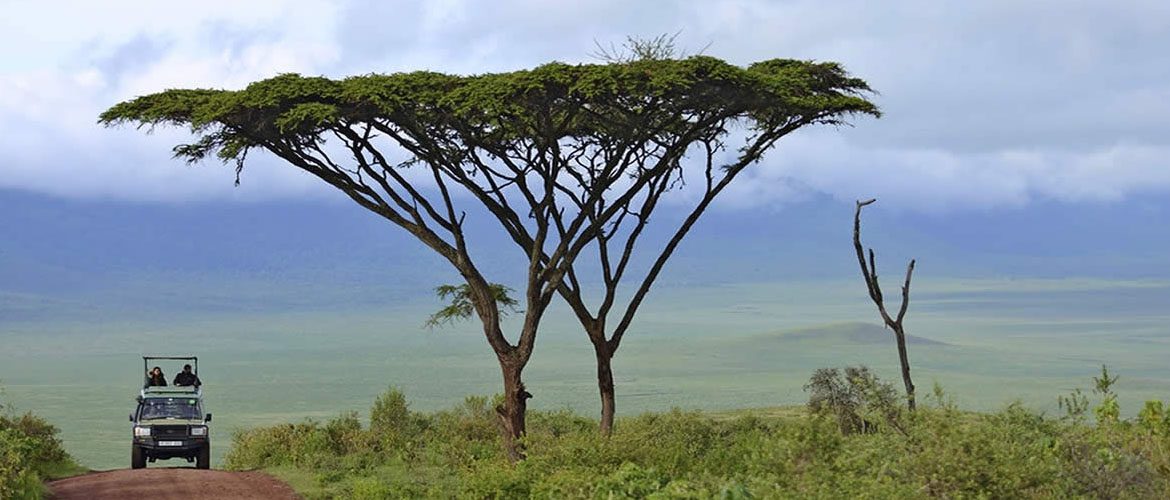
Before choosing a holiday destination, many travelers look at official travel advisories. These advisories are formal announcements made by government agencies to inform citizens about the safety of traveling to certain countries or regions. Their purpose is to keep travelers aware of potential risks and to help them prepare for any situation they might face. In the United States, the Department of State regularly publishes these advisories—sometimes referred to as warden messages—covering issues such as terrorism, natural disasters, political instability, armed conflicts, health emergencies, and spikes in crime.
Top Safari Lodges In Africa.
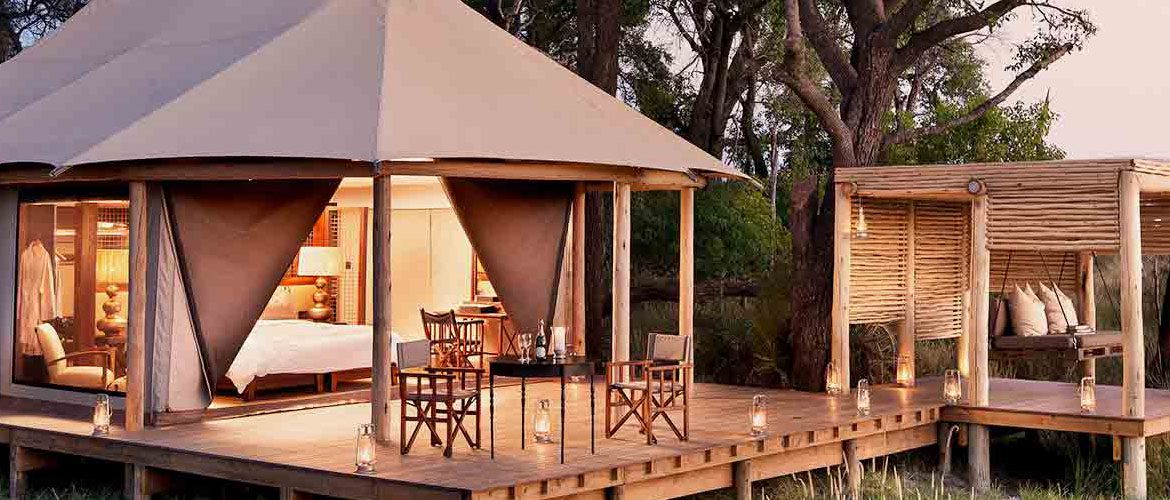
Over the past year and a half in Tanzania, We have been fortunate to experience countless safari lodges and unforgettable adventures. A safari here always feels magical, which is why we try to fit in as many journeys as possible. There are more breathtaking lodges than we could name, but a few stand out as true favorites. After careful exploration, we have highlighted some of the finest safari lodges in Tanzania. These luxury retreats allow you to immerse yourself in the wild beauty of the Serengeti, Ngorongoro, and beyond, where encounters with elephants, lions, and countless other species unfold right outside your door.
Bespoke Africa Safaris
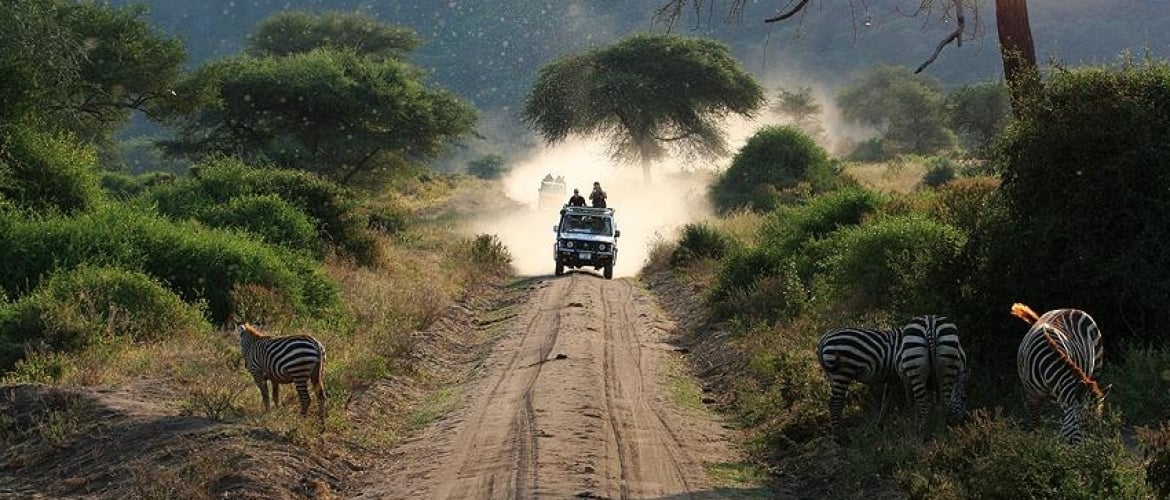
At Wildlife Safaris Tanzania, we understand that every traveler is unique—and so should every safari be. That’s why we design personalized safari packages, crafted to match your individual needs while giving you the chance to explore Africa’s most stunning landscapes in true luxury. The Wildlife Safaris Tanzania Personal Touch: Creating a Safari Just for You. With deep knowledge and passion for the continent, our expert safari planners carefully curate tailor-made itineraries that place you right in the heart of Tanzania’s wilderness, bringing you closer than ever to its extraordinary wildlife.
Safari costs and fees.
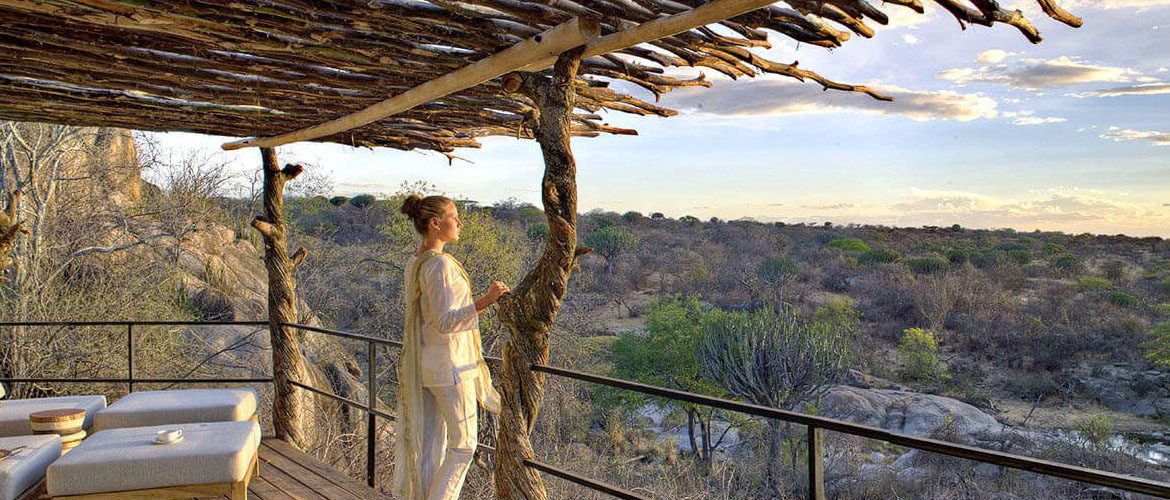
Safari prices vary widely, as the overall cost depends heavily on the choices you make. A single night on safari can cost anywhere from $500 to $5,000 per person, not including flights. Our travel specialists tailor each trip to your budget, ensuring you get the best value for your experience. Among destinations, Tanzania is often the priciest, with luxury safaris in peak season averaging $1,500 or more per person, per night. On the other hand, Kenya is generally the most affordable, where a luxury safari in the low season averages around $600 per person, per night.
The best time for Africa safaris.
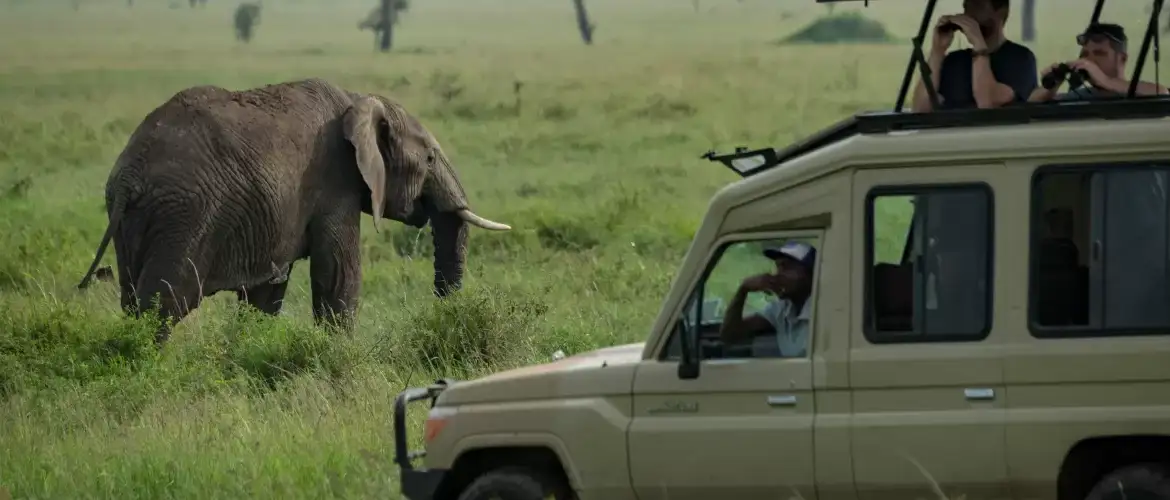
In Tanzania, the traditional dry season from June to October is often considered the prime time for a safari. During these months, wildlife gathers around rivers and waterholes, making sightings more frequent and predictable. Yet, Tanzania’s seasons also bring unique rhythms to the bush. The spectacle of the Great Migration across the Serengeti, and the movements of elephants along their age-old routes, are all tied to these seasonal cycles, creating dramatic moments on the savannah.
Top African safari packages.
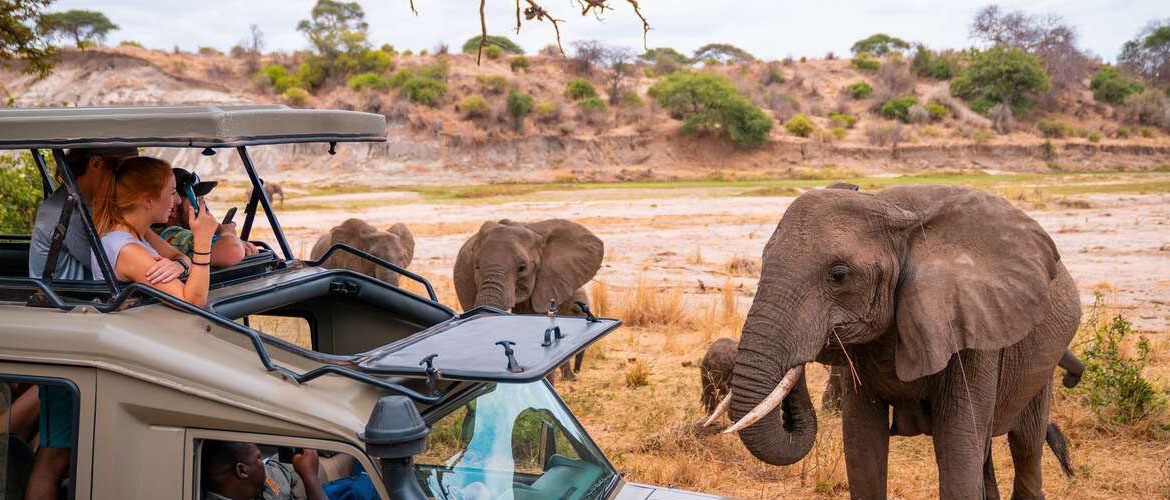
Our Wildlife Safaris Tanzania and tours are extraordinary journeys designed to inspire and leave lasting memories. Venture out on game drives with expert guides and trackers, and witness the awe-inspiring Big Five in their natural habitat. Relax in lodges and camps that echo the beauty and culture of Africa’s national parks and private reserves. Along the way, immerse yourself in local traditions, gaining perspectives that few travelers ever experience.
Featured Stories
